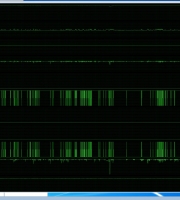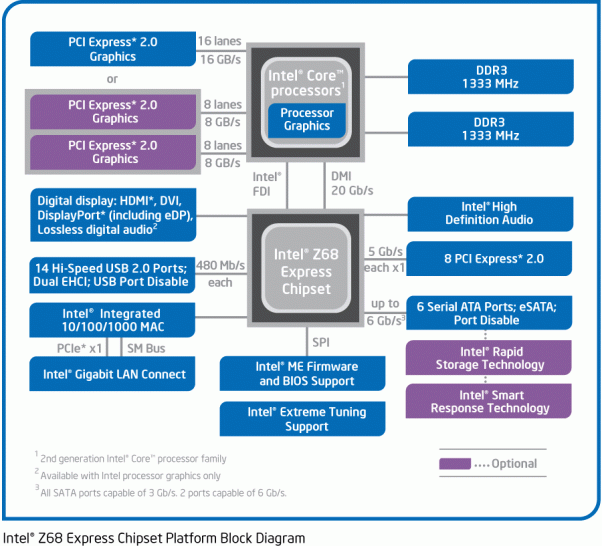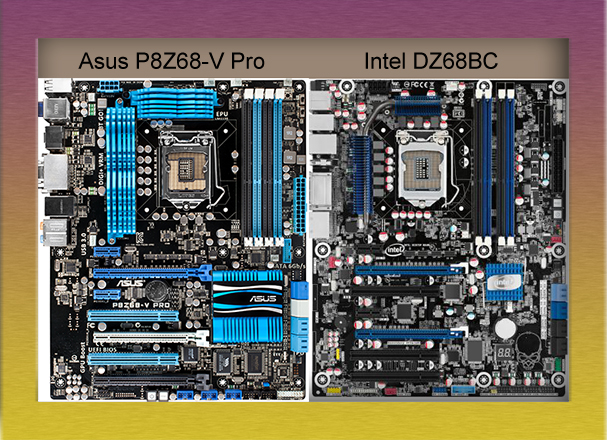


Z68 (May 2011)

A chipset for the performance concious main-stream user. The z68 was Intel’s second such platform – following the p67 six months earlier – to support its 32nm “Sandy Bridge” generation of processors and thus represented a “refresh” of existing technology.
The z68 inherited the p67’s 1155 pin socket design which at the time, was compatible with no less than 14 CPUs. These were a combination of core i3, core i5 and core i7 chips with speeds upto 3.4ghz. Those in the core i3 family had two processing cores under the hood, the core i5’s boasted four and the core i7s also harboured four but with Hyperthreading active on each. Water’s a little muddier now?
Other notable features included:
Notable absences included:
Two sparkling boards lay in waiting…

Average Joe 1: Hmm, ok, that’s a lot of processors to choose from….
Mr. Intel: Would you like a list sir?
Average Joe 1: Uh, yes please.
Mr Intel: Here you are…..
Average Joe 1: Rrrright….emmm….why do some have letters at the end even though they run at the same speed?
Mr. Intel: The K means the chip has an unlocked multiplier, previously only my “extreme edition” creations carried this feature, it allows for…..
Mr. Asus: Great overclocking, my board overclocks like you won’t believe, got more on the way aswell…..loads more…wait till you see the Maximus and the Gene…and the…
Mr. Intel: Thank you Mr. Asus, the S means a lower power chip. The 2600S for instance consumes 30 watts less than the 2600k, better for those of you desiring cool, efficient and silent systems.
Average Joe 2: Is there any reason you didn’t combine these features so we could have the best of both worlds, would be a been a little less confusing too.
Mr. Intel: I needn’t have provided either….and I believe choice to be a very healthy thing.
Average Joe 1: OK. Well, I’m taking the Asus, always have and probably always will, along with a 2500K, should be well upto any task I throw at it, plus more than a spot of gaming!
Average Joe 2: I’m going for Intel this time, can’t see too much difference and I’ll take it with a 2400, just want something stable, fast and future proof.
Mr. Asus and Mr. Intel are silent.